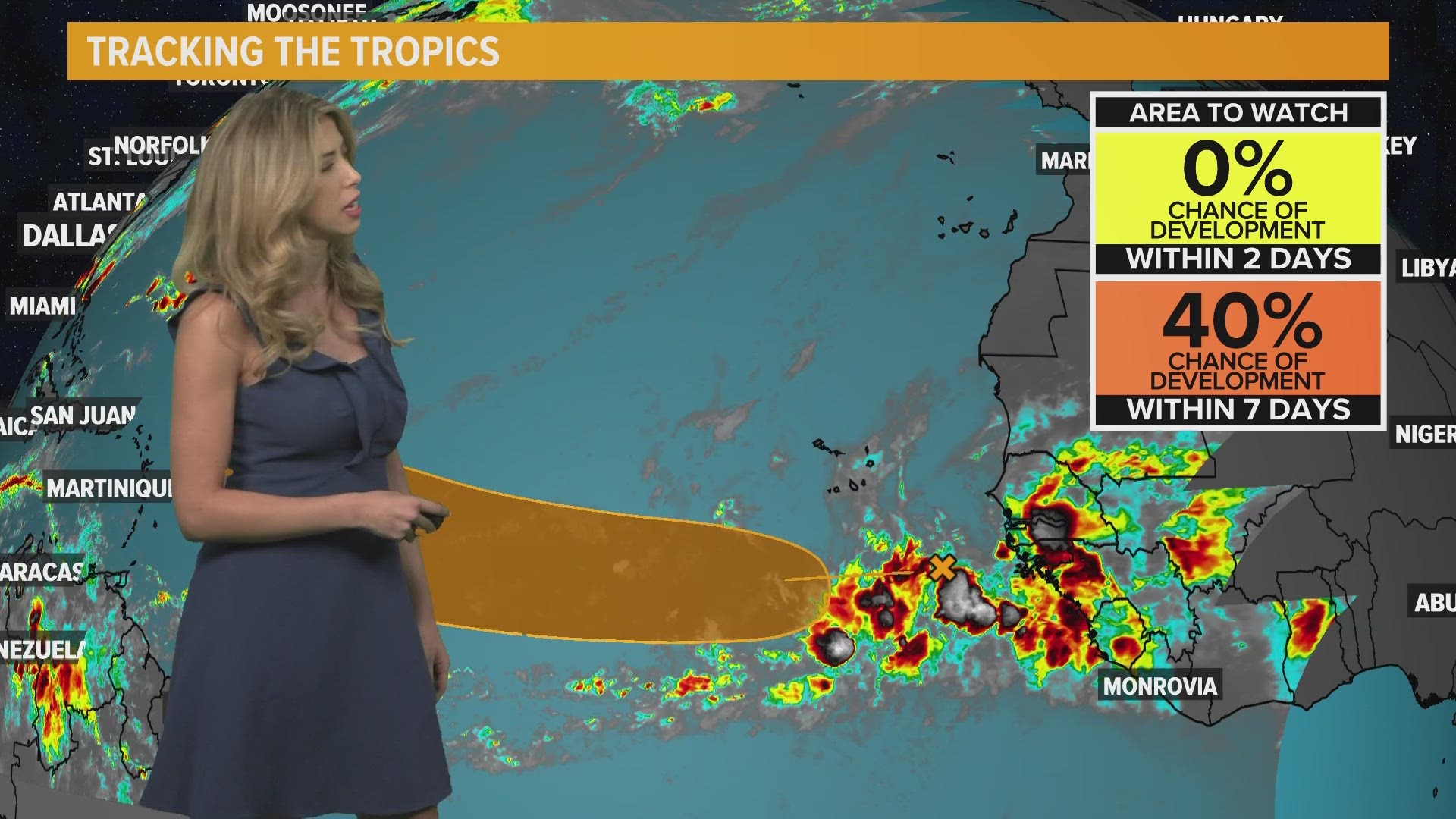For the first time ever, the National Hurricane Center (NHC) is expanding its tropical weather outlooks from 5 days to 7 days. This is the first season the NHC is implementing such a change and the goal is to give emergency managers and vulnerable residents more time to prepare. This is not a change to the forecast cone but rather the outlooks that the NHC releases for potential storms.
The latest feature in the Atlantic has been given a 80% chance of development sometime over the next 7 days. The red highlight represents the area in which an organized tropical system may develop.

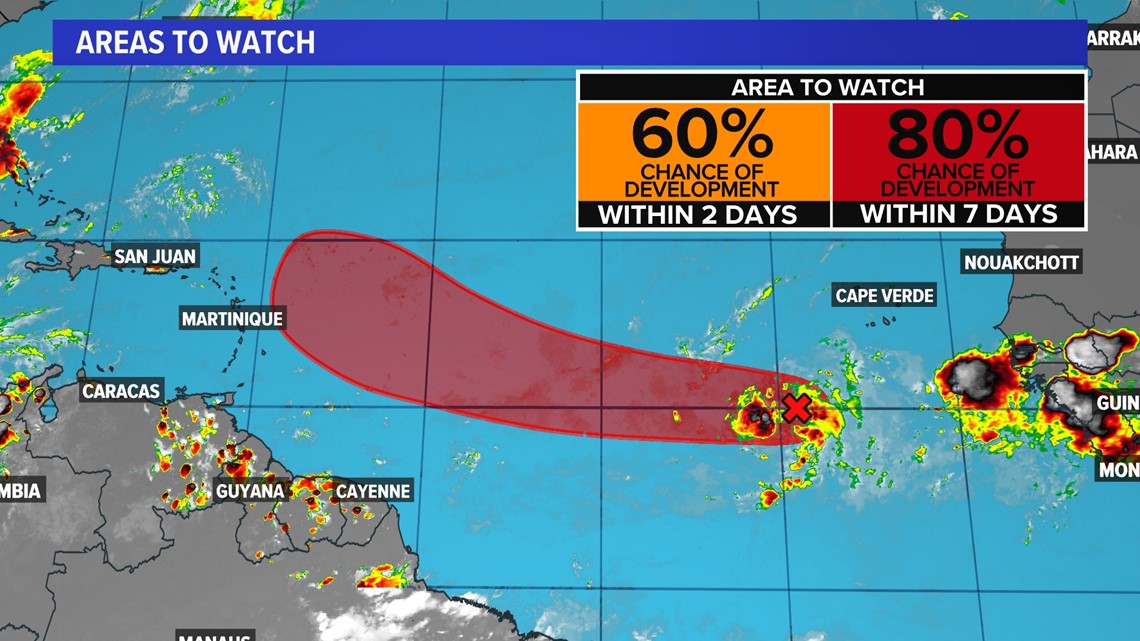
The 2-day odds have been increased to 60%, meaning a named system is possible by Monday. With this information, areas beyond that zone are able to start monitoring the forecast closer and potentially make preparations.

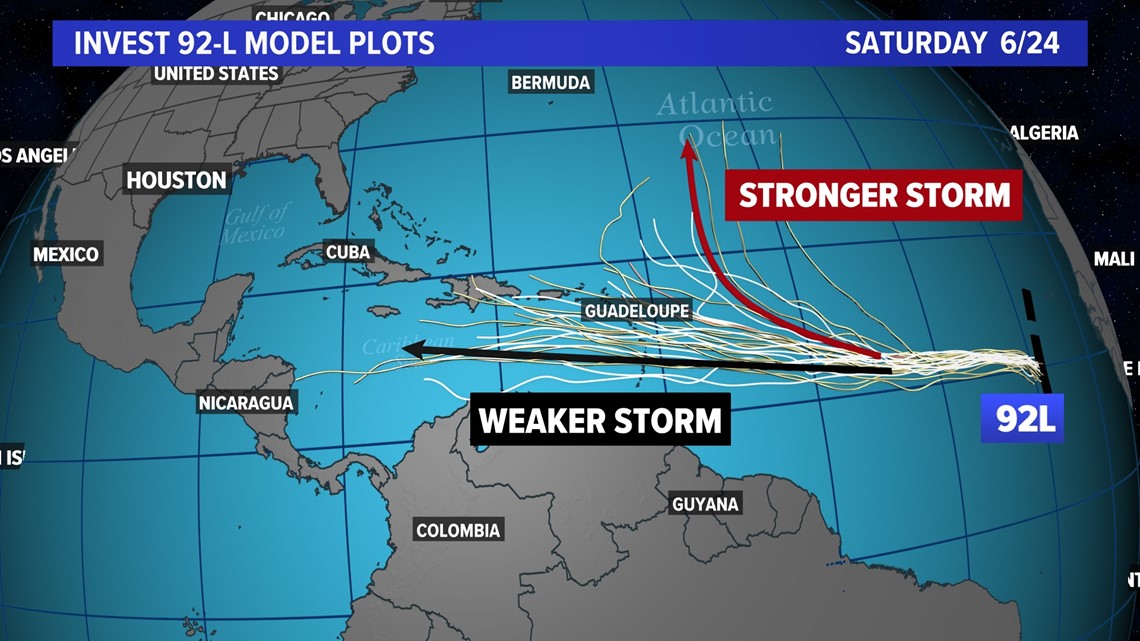
It's worth noting that this part of the Atlantic, known as the Main Development Region (MDR), is not a common spot for storms during the month of June. In fact, since 1851, only 7 systems have developed in this part of the Atlantic, east of the Lesser Antilles. A number of factors are contributing to this potential system, most notably water temperatures.

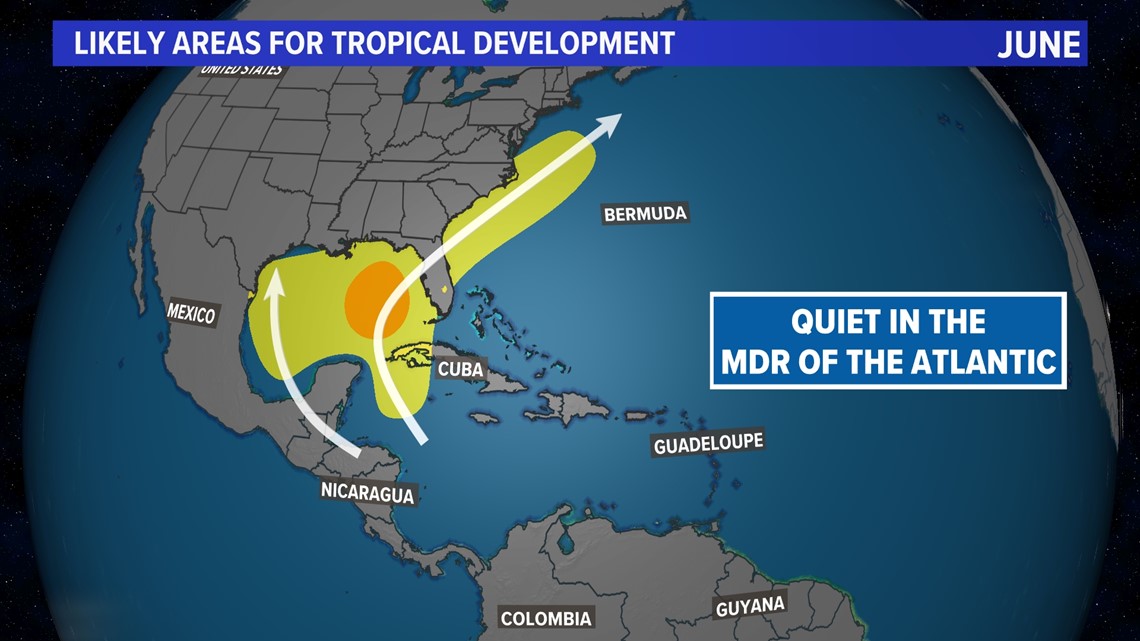
Sea surface temperatures in the MDR are currently running 5 to 8 degrees above normal. In a normal year, this part of the tropics would not have water temperatures warm enough to support any type of growth.

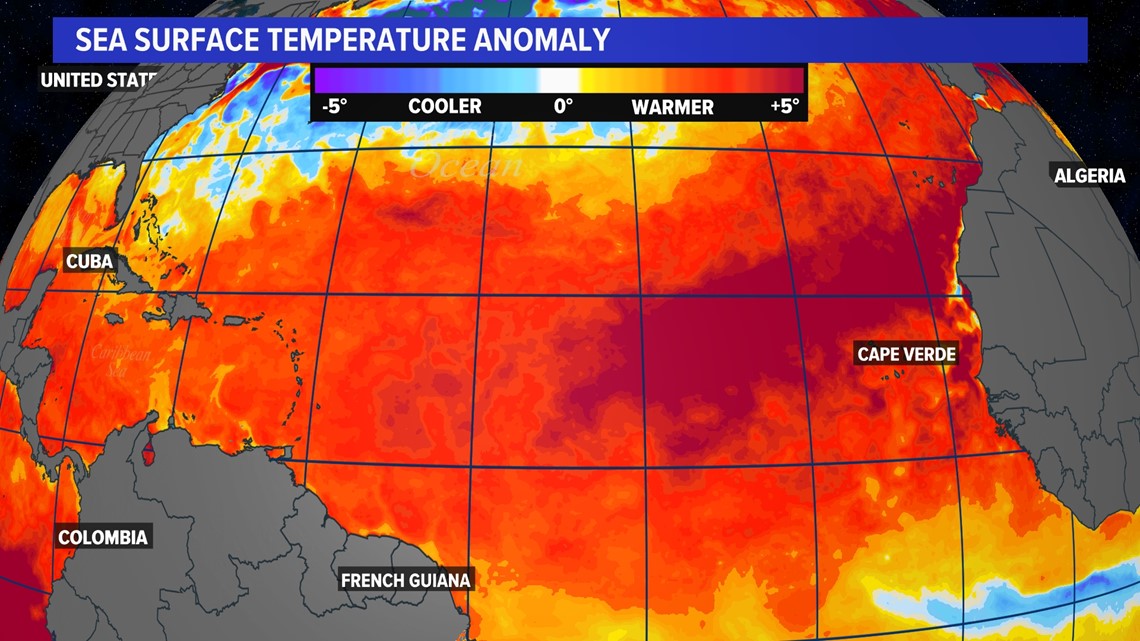
Additionally, wind shear is very low across this area. Typically in the early summer months, strong wind shear blows across the Atlantic, tearing any systems apart and carrying dust over the open waters as well. This combination of dust and shear usually puts a lid on activity until August and September.

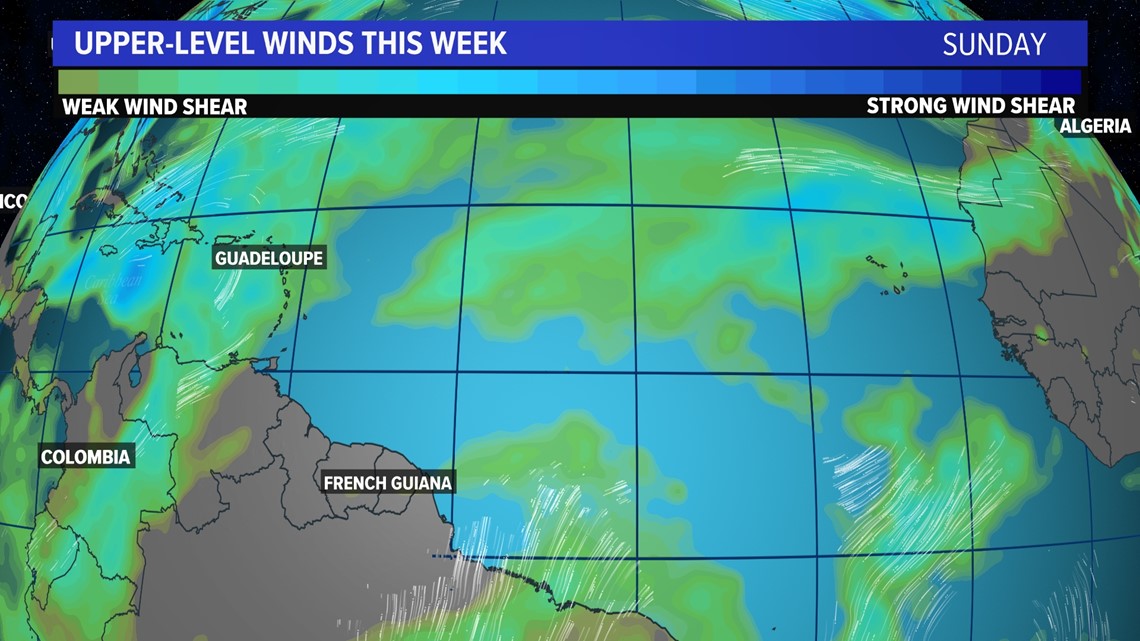
Either way, if something were to develop, it wouldn't impact land for at least 8 days. For now, it's something to monitor through the end of June.

